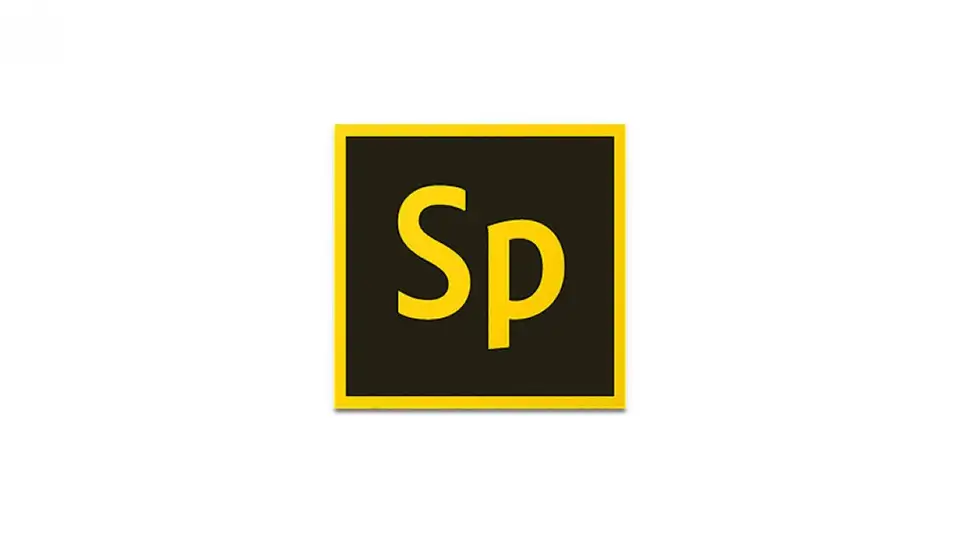Are you a writer looking to perfect the format of your short stories?
One common question that arises is whether the title of a short story should be italicized or not. The answer is Yes, the title of a short story should be italicized.
But don't worry, we provide the following formatting tips to help make your short story stand out.
Consistency is key when it comes to formatting, so be sure to use the same format for all titles throughout your short story. And don't forget to pay attention to punctuation, such as placing quotation marks around each dialogue in the story.
By following the guidelines below, your short story will look neat and professional.
Key Points
- The title of a short story should be italicized and follow the guidelines of the Chicago Manual of Style for correct formatting.
- Consistent formatting throughout the short story is essential for a professional and smooth appearance, including font, size, margins, line spacing, indentation, and alignment.
- When composing titles, consider the genre and audience, and use wordplay, alliteration, or unusual word combinations to create attention-grabbing titles that accurately reflect the theme or tone of the story.
- Proofreading and editing the work to find errors and inconsistencies, avoiding derogatory or insensitive language, and refining the work for submission are crucial steps to attracting the attention of publishers and readers.
Follow the Chicago Style Guidelines for Short Story Titles
Make sure to follow the Chicago Manual of Style Guidelines when italicizing the titles of your short stories, so that the titles shine like bright stars in a clear night sky. This is important because it helps with branding and makes your story more memorable. It also adds a professional touch to your work, which is crucial if you want to stand out in the competitive world of publishing.
To create attention-grabbing short story titles, try thinking out of the box. Don't be afraid to use wordplay, alliteration, or unusual word combinations. You want your title to be catchy and memorable, so that readers are intrigued and want to read your story. Craft a concise and compelling message, but make sure that message accurately reflects the theme or tone of your story.
By following the tips below, you can create titles that make your short story shine.
Examples of Italicized Titles
Now that our creativity is flowing, let's take a peek at some examples of how to give your short story titles attention-grabbing flair.
According to the Chicago Manual of Style, italics are the magical wand that transforms your titles into charming works of art. Imagine them gracefully slanted, like dancers on stage. So let's roll up our sleeves and italicize our way to title brilliance.
Here are some prime examples that will make your titles stand out like confetti:
- Whispers in the Starlight
- Mystic Melodies of Moonlit Meadows
- Chronicles of the Enchanted Quill
- Spectrum Skies: A Kaleidoscopic Tale
- Ethereal Echoes in Ebon Shadows
- The Velvet Voyage: Secrets of the Silent Sea
- Embers of Imagination
- Auroras Embrace: A Whispering Woods Adventure
- Beyond the Sapphire Veil
- Dreamweavers Dilemma
Remember, these titles aren't just words; they're invitations to the enchanting world you've created. Let italics add an elegant touch, inviting readers to enter your literary world.
With titles like these, your short story will be full of intrigue and invite readers to immerse themselves in your story.
Use Consistent Formatting Throughout Your Short Story
When formatting your short story, consistency is key. You want to ensure that the font and size, margins and line spacing, as well as indentation and alignment remain the same throughout your piece. By doing this, you provide a professional and smooth appearance to your work, making it easier for readers to follow along.
So take the time to ensure that these key points are consistent and you'll soon be on your way to a successful short story.
Font and Size
Using the right font and size can make a big difference in how readers feel about a short story. It can set the mood, create tension, and grab their attention.
When choosing the appropriate font, it's important to consider the genre and tone of the story. For example, a horror story might benefit from a more jagged and unsettling font, while a romance story might benefit from a more elegant and flowing font.
Adjusting the font size can also have a significant impact on the reading experience. Font that's too small will be difficult to read and strain the eyes, while font that's too large will look childish and unprofessional. It's important to find a balance that's easy on the eyes and fits the tone of the story.
By paying attention to font and size, you can enhance the overall reading experience and make your short story more engaging to your audience.
Margins and Line Spacing
Adjusting margins and using line spacing are important aspects of formatting that can make a big difference in the readability of your short story. By choosing appropriate paragraph breaks and formatting dialogue correctly, you can create visually appealing text that captures readers' attention and keeps them engaged. Here are some tips to help you get started:
- Adjust your margins to ensure your text is centered and easy to read.
- Use line spacing to create clear visual distinctions between paragraphs and make your text easier to read.
- Choose appropriate paragraph breaks to ensure your story flows smoothly and is easy to follow.
- Format dialogue correctly using quotation marks and indentation to clarify who is speaking.
Remember to proofread your work carefully to ensure it's free of errors and ready for publication.
By following ```html the simple formatting tips outlined above, you can create a short story that is easy to read, visually appealing, and engaging for your readers. So take the time to adjust your margins, use line spacing effectively, and format your dialogue correctly?your readers will thank you for it!
Indentation and Alignment
To make your writing stand out, indentation and alignment are key elements that can create a professional and smooth appearance, making it easy for readers to navigate your work. Properly formatting text can also enhance readability and help readers navigate your work.
When it comes to indentation, it's important to use consistent and appropriate spacing. This can be achieved by using paragraph spacing and text justification to ensure that your text aligns correctly.
Additionally, bullet points and numbered lists can help organize your thoughts and make your writing more accessible to readers.
Overall, taking the time to format your work properly not only makes it look more professional but also more enjoyable and accessible to your audience.
Pay Attention to Punctuation
Don't you hate it when you're reading a story and the punctuation is all over the place, making it difficult to follow the storyline?
Well, imagine how frustrating it would be if the same thing happened with the title of a story. That's why it's important for writers to pay attention to punctuation in their short story titles.
Proper use of capitalization, commas, and spacing can make a big difference in readability and professionalism of your work.
To make your short story titles stand out, it's important to understand genre conventions. For example, if you're writing a mystery, you might want to use a colon to separate the title from a subtitle that provides clues about the plot.
If you're writing a romance, you might want to use ellipses to create a sense of anticipation. And if you're writing a horror story, you might want to use an exclamation point to create a sense of urgency and fear.
By paying attention to these details, you can create titles that not only grab the reader's attention but also accurately represent the tone and genre of your story.
Consider Genre and Audience
Consider who you're writing for and the genre you're working in when crafting titles that truly resonate with your readers.
Your target audience plays a big role in determining the tone of your story titles. If you're writing for young adults, you might want to use titles that are more playful or suspenseful, while titles for literary readers might require a more sophisticated and thought-provoking approach.
It's also important to consider cultural sensitivities and language usage when crafting your titles. Make sure your titles don't offend any particular groups or cultural identities, and avoid using language that could be considered derogatory or insensitive.
Ultimately, strong titles that resonate with your target audience and accurately reflect the tone and content of your story can make a big difference in capturing the attention of potential readers.
Proofread and Edit Your Work
When proofreading and editing your work, it's important to check for errors and inconsistencies in grammar, spelling, and punctuation.
Getting feedback from beta readers can also be helpful in identifying areas that need improvement.
Once you've made the necessary changes, perfecting your work for submission can make a big difference in attracting the attention of publishers and readers.
So take the time to review and refine your work, and you'll be one step closer to success as a writer.
Check for Errors and Inconsistencies
You may feel frustrated when inconsistencies and errors crop up in your writing, but taking the time to check and correct them in the end will ultimately improve the quality of your work and leave a positive impression on readers. Here are some tips to help you identify and address the distracting errors and inconsistencies:
- Read your work aloud: This will help you catch awkward phrases and grammar errors that you may overlook when reading silently.
- Take breaks: Step away from your work for a moment and come back with fresh eyes. This will help you see errors that you may have overlooked before.
- Use a spell checker: A spell checker isn't a foolproof tool, but it can help you catch some of the most glaring errors in your writing. Be sure to double-check each suggestion it offers, as sometimes the suggestions can suggest entirely wrong words.
By taking the time to check for errors and inconsistencies in your writing, you can ensure that your work is of the highest quality. This will not only leave a positive impression on readers but also help you avoid common mistakes that can detract from your writing.
Remember, proofreading is an important part of the writing process, and it's worth taking the time to do it right.
Get Feedback From Beta Readers (Limited Readers)
Getting feedback from beta readers can be a valuable tool in improving your writing and gaining insights into how your work is perceived by others. Finding beta readers can be as simple as asking friends or family members to read your work, or as complex as joining writing groups and online communities. It's important to find beta readers who are willing to provide honest feedback and constructive criticism, as this will help you identify areas that need improvement and make your writing stronger.
When incorporating feedback from beta readers, it's important to remember that not all feedback is useful or relevant. It's up to you as the writer to determine which feedback to incorporate and which to discard. Look for patterns in the feedback you receive, and use this to guide your revisions.
Remember that the goal is to make your writing as strong as possible, and incorporating feedback is just one step in the process. Stay open-minded, be willing to make changes, and trust your instincts as a writer.
Perfect Your Work for Submission
Now that you've received feedback from beta readers, it's time to perfect your work for submission. This means going through the editing process and ensuring that your short story is free of errors and ready for publication.
However, it's important to be aware of common mistakes that writers make at this stage. One of the most important aspects of editing is ensuring that your short story has a strong title. This is the first thing readers will see and can make or break their decision to continue reading.
A strong title can grab their attention and make them curious about your story, while a weak title can cause them to pass it by. So take the time to create a title that accurately represents your story and captures the reader's attention.
Remember to italicize the title when necessary, as this is the standard formatting rule for short stories. By paying attention to these details, you can increase your chances of getting published.
Conclusion
By following the Chicago Manual of Style, you can ensure that your titles are italicized correctly and your work is presented professionally.
Remember to use consistent formatting throughout your story and pay attention to punctuation to avoid confusion for your readers. It's also important to consider the genre and your audience when choosing your short story title, as this can greatly influence your readers' interest in your work.
Lastly, always remember to proofread and edit your work before submitting it. This will help you catch any errors and ensure that your story is clean and polished.
With these tips and tricks, you're ready to master the art of writing short stories. Keep up the good work and happy writing!
 Indonesia
Indonesia 









